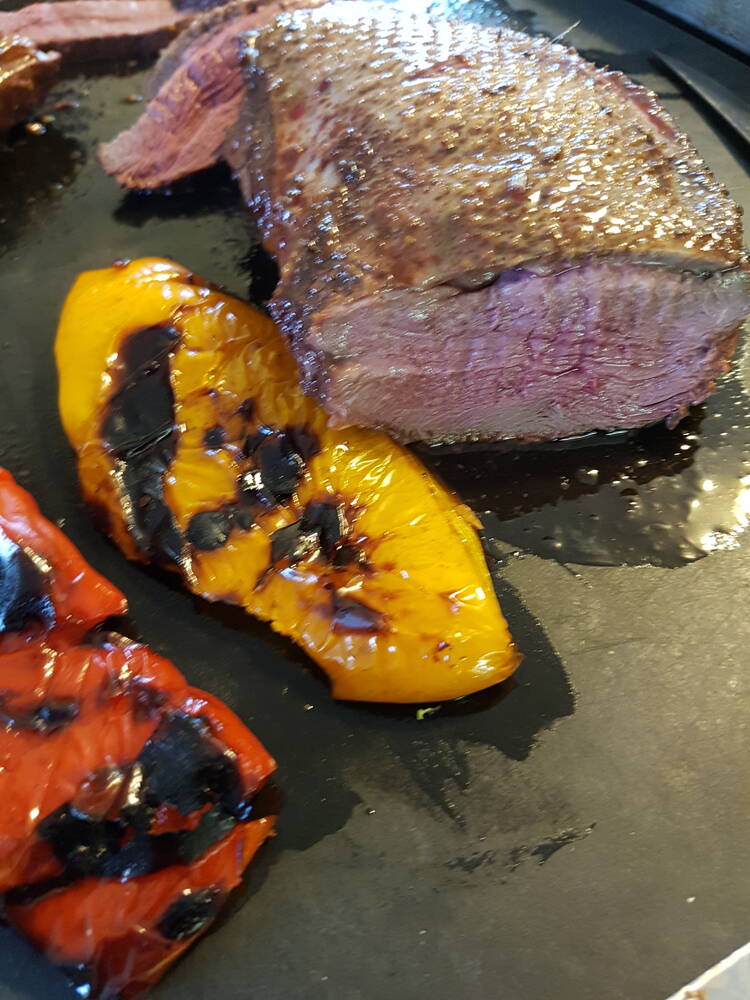Large, individually potted plants add a hint of sophistication to the interior landscape because they avoid the clutter often associated with a collection of smaller ones, and can present a modern, sleek appearance. Even a smaller home can accommodate a large plant if it isn’t too wide and has a more vertical growth habit. By keeping it trimmed and trained so that it fits the space, and by being prepared to slip it to start a new plant when the parent plant begins to outgrow its location, a gardener can keep it in scale with its surroundings.
Read Also

Giant Canada geese have gone wild in Manitoba
Giant Canada geese are seemingly everywhere and can be fine table fare for local hunters, but 70 years ago, they were borderline extinct.
One such large plant, the easy-care rubber tree, will adapt itself to most indoor environments. These plants prefer moderate light levels but not direct sunlight, at least during the summer. Our sunlight during the winter won’t hurt it, but don’t leave a rubber tree in front of a south-facing window during the summertime.
Sometimes a rubber tree becomes quite tall (in their natural tropical environment they can grow to over 35 metres) so it often needs some support. Use a large bamboo stake and tie the trunk to it with garden twine; make sure the stake is placed behind the plant so that it is barely visible and any excess twine is snipped off. The stiff, leathery leaves look best when they are kept clean, so wiping them with a damp cloth every couple of weeks is a good idea.
Rubber trees are often multi-stemmed. This can be controlled, depending on how large you want the plant to get. A single-trunked specimen will be narrower while one with several trunks will have greater width.
The plants are quite drought tolerant, but it is a good idea to water before the soil completely dries out; rubber trees, however, respond poorly to being kept too wet. You will know if you are keeping it too dry because the bottom leaves will yellow and fall off. Overwatering will cause the lower leaves to drop off as well, but they may not yellow first. This might also lead to root rot, so ensure that the container has excellent drainage and that the pot will not sit in excess water that drains out of the holes. Exposing the plant to drafts — particularly cold drafts during the winter months — might also cause leaf drop.
Rubber trees are not heavy feeders so you need only fertilize a couple of times a year, once in the spring and again in midsummer. These plants do not put forth much active growth during the winter and should not be fertilized during this season.
A rubber tree can be cut back by simply cutting off the top of a stem just above a leaf axil. A new stem (sometimes more) will grow from the axil. These cut-off stems are perfect for propagating new plants. Simply cut off the bottom so that the cutting will be about 30 cm long and either plant it in dampened soilless mix or put it in a vase of water. They will root in water in a few weeks and then can be planted into a soilless mix.
Most rubber trees up to this time have had lovely dark-green foliage, but like most other plants, plant breeders have widened the selection available, and there are now ones that have red foliage or variegated white and green foliage. These varieties require a bit higher light intensity than the plain green ones to maintain their colour.
A rubber tree is a good investment and will enhance the interior landscape for years to come if it is properly maintained and propagated as needed.
Albert Parsons writes from Minnedosa, Manitoba.















